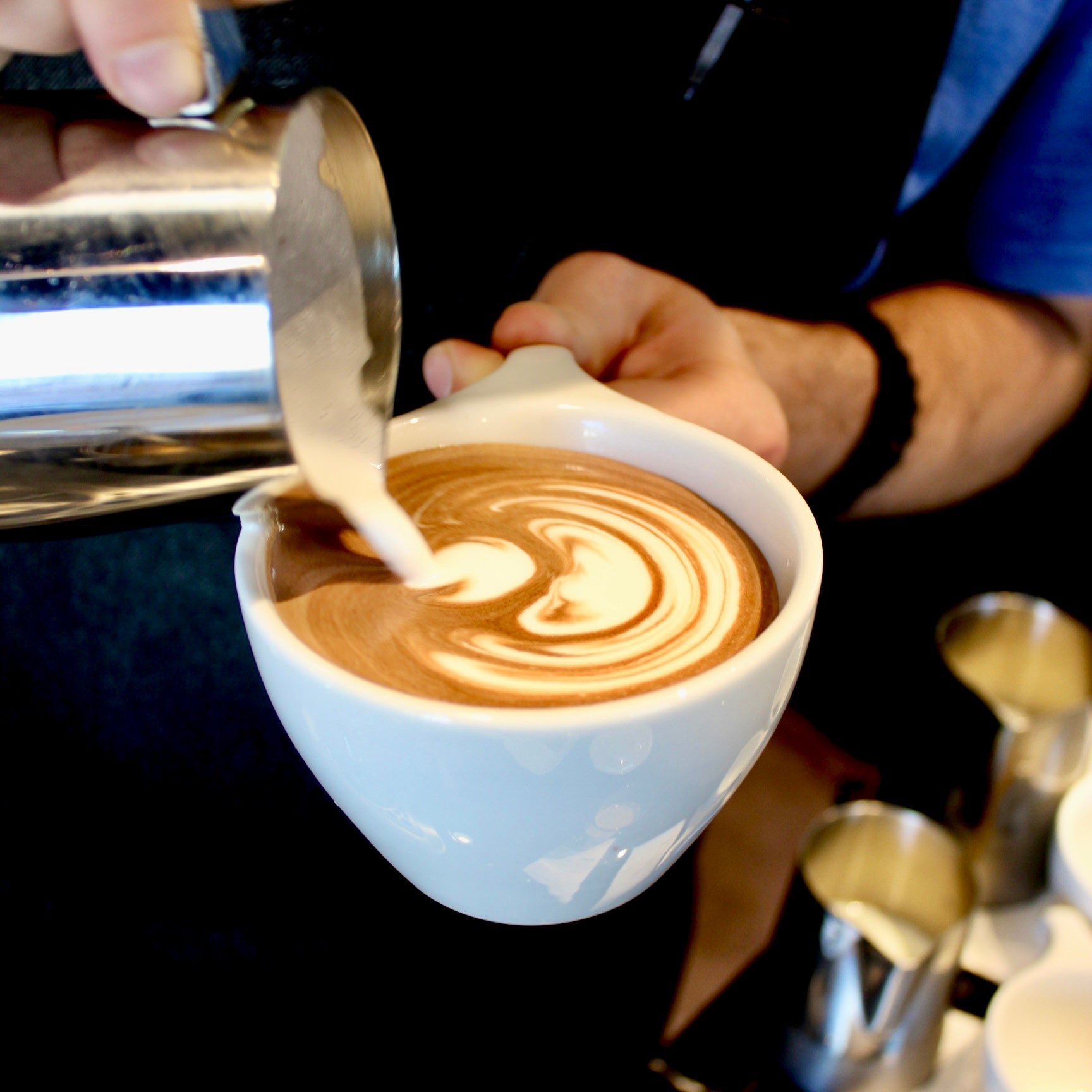What is the significance of latte art?
If you buy an espresso drink from a coffee shop and the barista is able to produce a drink with well-structured latte art, you can trust that the coffee is good and know that the business stands for quality.
Latte art is the result of a three staged synthesis between micro foam and properly extracted espresso: 1. Espresso extraction 2. Milk steaming 3. Milk pouring
A barista must be capable of pulling a double shot of espresso with adequate crema and able to steam milk into a silky texture, akin to wet paint. Only at this point is pouring latte art a possibility.
Essentially the espresso needs to be a thick enough base. Without quality espresso the white lines aren’t able to catch in the espresso. Not only does properly extracted espresso allow for latte art, but it also tastes really good too.
Following a simple coffee to water ratio and learning how to use grind setting adjustments to produce desired espresso extractions is the secret to pulling professional level espresso.
Steaming milk is easily the hardest part to master. The steam wands on commercial espresso machines are incredibly powerful, so steaming milk only takes 10-20 seconds depending on the amount of milk being steamed, making it very easy to lose control and waste the milk.
This is a skill only time and practice can achieve. One has to delicately move the milk pitcher in a way to introduce a small and steady amount of steam into the surface of the milk. This will create the desired micro-foam one can use to pour latte art into espresso.
A cortado, cappuccino, or latte with latte art on the surface is simply an indicator that the drink is composed of skillfully crafted espresso and milk.
It's not easy!


Share:
What is Specialty Coffee?